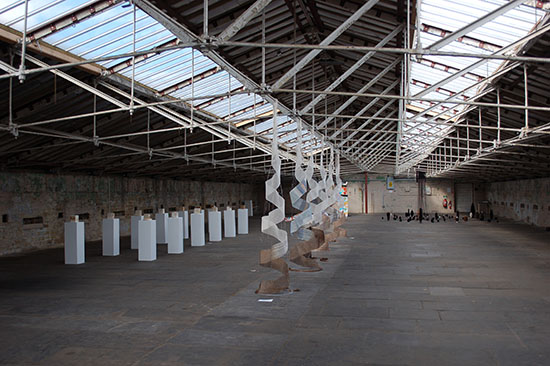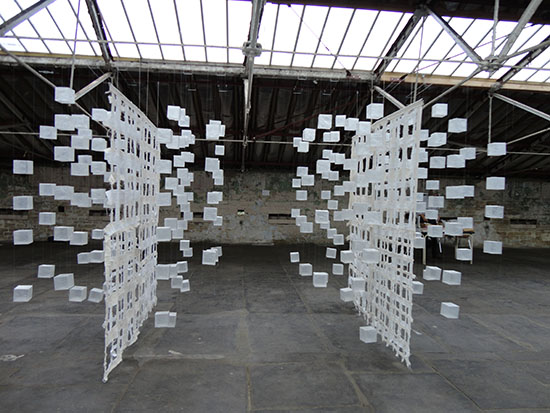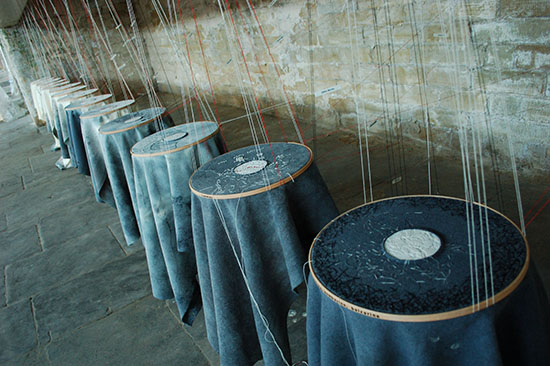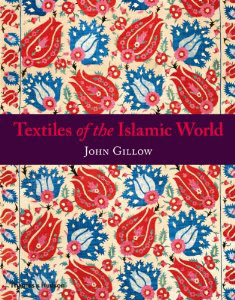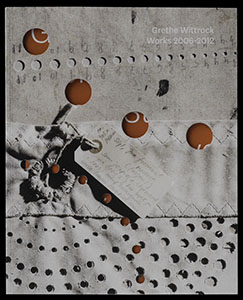You have several weeks yet to visit Cloth & Memory(2), dramatic, site-specific exhibition located in the UNESCO World Heritage Site, Salts Mill, Saltaire Yorkshire UK. Cloth & Memory(2) takes place in the original Spinning Room (known as The Lobby), which when first built was thought to be the largest industrial room in the world. The extraordinary internal architecture, with its peeling walls and floors still retain the marks and smells of its original use. All the works engage with the palpable history of place that is evident at Salts Mill and The Lobby in particular, and range from large scale interventions in space to highly intimate placings within the fabric of the building.
The exhibition’s curator is bga contributor Professor Lesley Millar of the University of Creative Arts. Informed by the knowledge that “cloth holds the memory of our time and connects us with the memories of other times and other places…,” the exhibition features 23 artists drawn from Europe, Japan and the UK.
Among the participants is Caroline Bartlett (UK), whose work involves a number of large embroidery hoops within one of the wall bays. Each stretched, stitched, woolen cloth piece will be inset with a small porcelain round, imprinted with an impression taken from a fragment of textiles. Bartlett has long been interested in the indications of other histories being formed through textiles and the journey that they take.
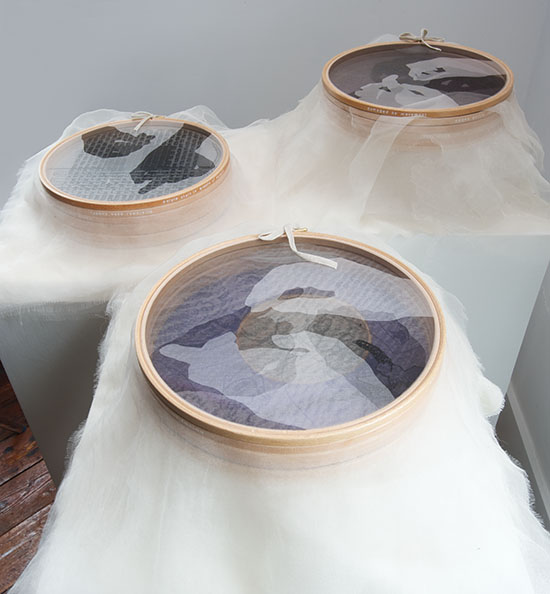
Listening In, Caroline Bartlett, mixed media; wooden rings stretched with archival crepeline, wool, linen tape, perspex, 2.75” x 17” x 17”; 5” x 17” x 17”; 6” x 17” x 17”, 2011, photo by tom Grotta
Bartlett’s Listening In, for example, builds on a previous work of hers entitled Conversation pieces, commissioned by the Whitworth Art Gallery in Manchester, UK. These works evolved from observation and dialogue with the archivist and conservators who work with the Whitworth textile collection and generously shared with the artist some of the procedures and practices with which they are involved. “While an interest in the museological processes of collecting, archiving, storing and conserving guided my explorations,” Bartlett explains, “it was a random search through the accession cards[at the Whitworth] that provided the stimulus and gave focus to the work. It was these that bore witness to the health and state of each item, to the work undertaken to preserve and stabilize each artifact, to endeavors to fill in gaps in the history and making of the object across time and space.” Stilled, Bartlett’s work in Cloth & Memory(2), continues these explorations: “I think of skin, bone, membrane; a layered dermis, and of networks of social, industrial, public and private relations, processes and materiality connecting the building itself with the idea of cloth as silent witness to the intimacies and routines of daily lives.”
Cloth and Memory(2) runs through November 3, 2013. There are curator, coordinator and artist tours each Saturday through the exhibition’s closing. If you can’t visit Yorkshire in time, be sure to visit to exhibition’s website at: http://www.clothandmemory.com. There are images, a video tour, narrated by Lesley Millar and an order form for the comprehensive catalog.

